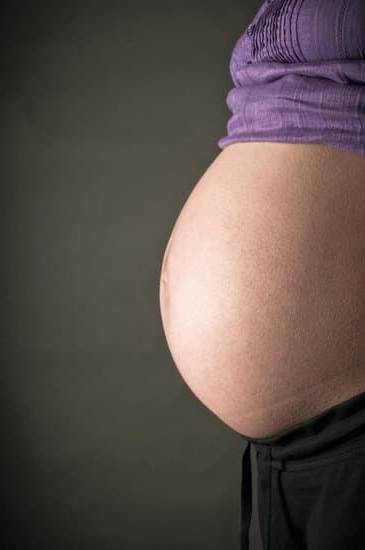Discharge Symptoms In Early Pregnancy
If you’re pregnant, you may experience a discharge that’s different from your usual vaginal discharge. This type of discharge is called leukorrhea and is common in early pregnancy. Leukorrhea is a whitish or yellowish discharge that’s thin and slippery. It’s caused by the increased production of the hormone estrogen, which occurs during pregnancy.
Leukorrhea is usually harmless, but it can be a sign of an infection, so it’s important to see your doctor if the discharge is accompanied by other symptoms, such as itching, burning, or a strong odor.
If you’re experiencing discharge during pregnancy, there are a few things you can do to help reduce the amount of discharge:
•Wipe from front to back after using the bathroom
•Avoid using scented products near the vagina
•Avoid wearing tight-fitting clothes
•Drink plenty of water
•Use a panty liner to absorb the discharge
White Discharge And Spotting During Pregnancy
There are many changes that occur during pregnancy, and one of the most common is an increase in vaginal discharge. Many women are concerned when they experience a change in their discharge, particularly if they start to see a white discharge.
What is White Discharge
Vaginal discharge is a naturally occurring fluid that helps to keep the vagina clean and lubricated. The discharge is made up of cells from the vaginal wall, mucus, and bacteria. The amount and type of discharge can vary throughout the menstrual cycle and pregnancy.
White discharge is simply discharge that appears to be white in color. This can be caused by a number of things, including an increase in the amount of cervical mucus, an infection, or a sign of early pregnancy.
What Causes White Discharge in Pregnancy
There are a number of reasons why you may experience a white discharge during pregnancy. The most common reason is an increase in the amount of cervical mucus. This is caused by the increase in the hormone estrogen, which is produced in greater amounts during pregnancy.
Another common cause of white discharge is a yeast infection. A yeast infection is a fungal infection that can occur in the vagina. It is caused by a type of fungus called Candida albicans. Symptoms of a yeast infection include vaginal itching, burning, and discharge that is white, thick, and cheesy.
Another cause of white discharge in early pregnancy is the presence of hCG, or human chorionic gonadotropin. hCG is a hormone that is produced in the early stages of pregnancy. It is responsible for the development of the placenta and the production of estrogen and progesterone. hCG can sometimes cause a white discharge in early pregnancy.
What Should I Do if I Have White Discharge
If you are experiencing a white discharge, it is important to consult with your doctor. There are a number of things that can cause a white discharge, and some of them can be serious.
Some of the things that can cause a white discharge include:
-An increase in the amount of cervical mucus
-A yeast infection
-A sign of early pregnancy
-A sexually transmitted infection
-A urinary tract infection
If you are experiencing a white discharge, it is important to get it checked out by your doctor.
Blood Clot Discharge Early Pregnancy
Blood clots are a common occurrence during pregnancy, but can be quite alarming. Most blood clots during pregnancy are benign and will dissipate on their own. However, some blood clots can be a sign of a more serious problem, such as a miscarriage or ectopic pregnancy.
One of the most common causes of blood clots during early pregnancy is a miscarriage. A miscarriage is the spontaneous loss of a pregnancy before the 20th week. Miscarriages can be caused by a number of factors, including chromosomal abnormalities, health problems in the mother, and infections.
Another common cause of blood clots during early pregnancy is an ectopic pregnancy. An ectopic pregnancy is a pregnancy that implants outside of the uterus, usually in the Fallopian tubes. Ectopic pregnancies are dangerous because they can rupture and cause serious internal bleeding.
If you experience any symptoms of a blood clot, such as pain, swelling, or redness in the area where the clot is located, seek medical attention right away. Your doctor will be able to determine whether or not you are experiencing a miscarriage or an ectopic pregnancy, and will provide the appropriate treatment.
Thick Mucus Discharge After Pregnancy
Most pregnant women experience thick mucus discharge during the third trimester. This is a result of the increased production of cervical mucus, which helps to protect the baby and the uterus from infection. While the discharge is usually nothing to worry about, it can be a cause of discomfort for some women.
In most cases, the discharge will thin out and disappear after delivery. However, in some cases it may persist for a few weeks or even months. If the discharge is accompanied by other symptoms such as itching, burning, or pain, then it may be a sign of a more serious problem and you should consult your doctor.
In general, the thick mucus discharge after pregnancy is nothing to worry about. However, if you experience any other symptoms or if the discharge does not go away after a few weeks, then you should consult your doctor.
Clear Sticky Nipple Discharge Pregnancy
is one of the most amazing, life-altering experiences a woman can go through. Along with the amazing changes that come with carrying a child, there are also some not-so-welcome changes, such as increased discharge. For most women, this increased discharge is nothing to worry about, but for some, it can be a sign of a problem. One such problem is clear sticky nipple discharge.
Clear sticky nipple discharge can be a sign of a number of different problems, from a simple infection to a more serious problem like cancer. If you experience any kind of clear sticky nipple discharge, it is important to see your doctor as soon as possible.
The most common cause of clear sticky nipple discharge is a simple infection. This infection can be caused by a number of different things, from a bacteria to a virus. The most common symptoms of an infection are a discharge that is thick and white or yellow, and pain or a feeling of fullness in the breasts.
If you experience clear sticky nipple discharge and also have a fever, it is likely that you have a more serious infection and you should see your doctor right away. Other serious causes of clear sticky nipple discharge include cancer and ductal ectasia.
If you are experiencing any kind of clear sticky nipple discharge, it is important to see your doctor as soon as possible. Your doctor will be able to diagnose the cause of your discharge and prescribe the appropriate treatment.

Welcome to my fertility blog. This is a space where I will be sharing my experiences as I navigate through the world of fertility treatments, as well as provide information and resources about fertility and pregnancy.





